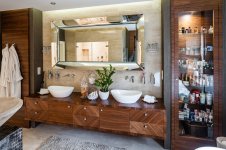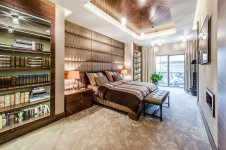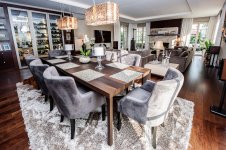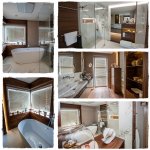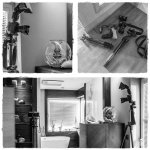Eric, in the spirit of constructive criticism, this photo of yours would be a prime candidate for the PC (perspective control) or as someone else called it (tilt shift) lens. it would help align the columns vertically instead of showing them "falling over". you might be able to get the same thing with setting the camera level with the midway point between floor and ceiling.
the lighting though, looks great and nicely balanced, which i imagined took some work to do.
compositionally, it might make it more interesting if all the chairs were not lined up--perhaps the one second to last on the right was at an angle as if someone had just left sitting there. that's of course up to personal taste, and the client's desires of course. but i would have suggested it to give them an option for a little bit more dynamic look.
I would have also preferred a higher angle to see the bar top but then of course you're dealing with shooting straight on into a mirror so that presents its own problems. one possible solution would be for the client to place a prop or something non-reflective at the base of the mirror--something interesting that looks like it would belong there.
the lighting though, looks great and nicely balanced, which i imagined took some work to do.
compositionally, it might make it more interesting if all the chairs were not lined up--perhaps the one second to last on the right was at an angle as if someone had just left sitting there. that's of course up to personal taste, and the client's desires of course. but i would have suggested it to give them an option for a little bit more dynamic look.
I would have also preferred a higher angle to see the bar top but then of course you're dealing with shooting straight on into a mirror so that presents its own problems. one possible solution would be for the client to place a prop or something non-reflective at the base of the mirror--something interesting that looks like it would belong there.

